Green Sapphire Gemstone: Meanings, Properties, Value & Quality
 Green sapphire is a type of sapphire gemstone found in a range of green hues, but most often olive-colored. Natural, untreated green sapphires are somewhat rare but not well-known, so they aren’t too hard to find.
Green sapphire is a type of sapphire gemstone found in a range of green hues, but most often olive-colored. Natural, untreated green sapphires are somewhat rare but not well-known, so they aren’t too hard to find.
In recent years, green sapphire engagement rings have started becoming popular non-diamond alternatives. Are green sapphires more expensive than diamonds? Nope, one major benefit is that they’re far more affordable than diamonds.
Are green sapphires good? Yes, they’re durable gems with various styles, including teal, bi-colored, and even color-changing options.
Intrigued yet? Stay tuned to learn all about green sapphire cost, properties, meanings, and more!
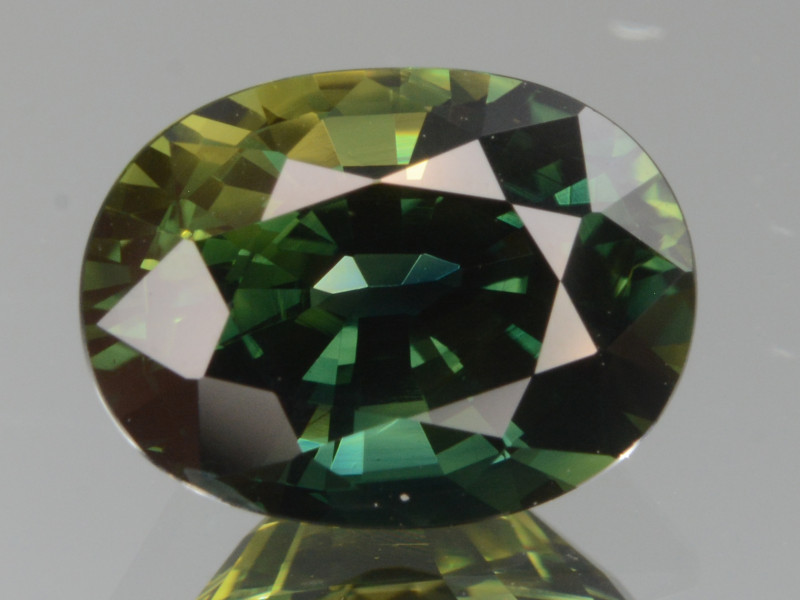
About Green Sapphire Stone
Green sapphires are “fancy sapphires,” a term for any non-blue type. These sapphires come in pastel to dark hues, with colors like mint, olive, and forest, to name a few.
They’re not as popular as blue sapphires, but the brand Boadicea the Victorious released a luxury perfume in 2016 called “Green Sapphire.”
Sapphire is a September birthstone, Taurus zodiac stone, and traditional 5th, 45th, and 75th wedding anniversary gem. Green sapphire is a star stone for Mercury, which rules communication and intellect.
All sapphires are precious gemstones, but green sapphires can resemble another precious gem: emerald.
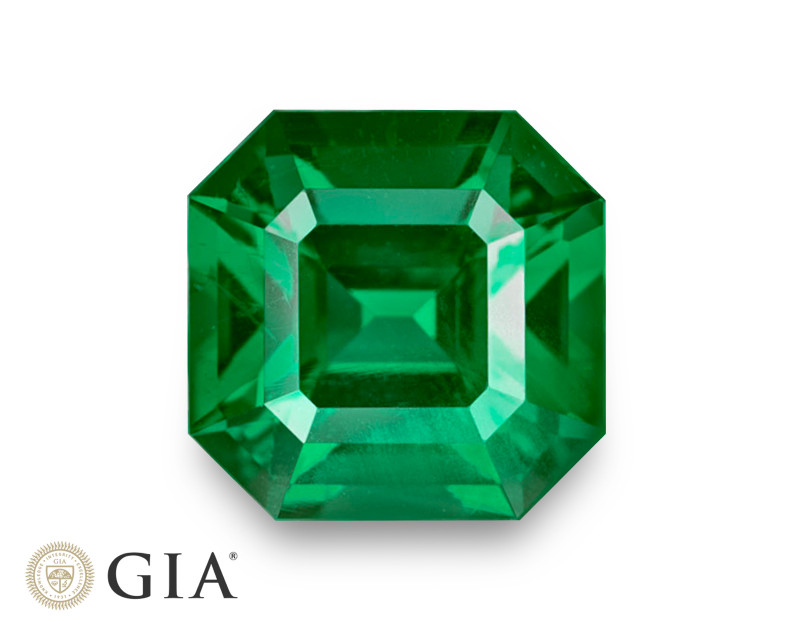 Pictured above: Emerald
Pictured above: Emerald
Green Sapphire vs. Emerald
Green sapphires can resemble emeralds, even misleadingly sold sometimes as “Oriental Emerald.” However, there are key differences:
Hardness: Green sapphire ranks at 9 on the Mohs scale while emerald ranks at 7.5 to 8.
Durability: Emeralds are more prone to breaking or chipping.
Color: Green sapphires are generally less rich and vivid in color.
Clarity: Emeralds tend to have more visible inclusions.
Price: Emeralds are more expensive.
With properties in mind, let’s dive into green sapphire’s mineralogy.
Green Sapphire Specifications & Characteristics
Sapphires and rubies make up the corundum family of aluminum oxide minerals. Pure corundum is colorless. Green hues come from a combination of iron, titanium, and/or vanadium. More titanium and iron means bluer hues, while more iron than titanium means greener hues.
How can you tell if a green sapphire is real?
You can identify natural and synthetic green sapphires with proper gemological tools. Under a spectrometer, you’ll see absorption spectrum lines at 4500, 4600, and 4700 in natural green sapphires. You’ll see lines at 5300 and 6870 in synthetic green sapphires.
Some green sapphires display asterism, an optical phenomenon creating star-like rays of reflected light. Certain inclusions (parallel bunches of diaspore or rutile) cause the effect. However, asterism is less common in green, orange, and yellow sapphires.
Here’s an overview of green sapphire’s mineral data:
Mohs hardness: 9
Color: Shades of green; Possible yellow, brown, and/or blue undertones; Color-zoning common; Color-changing and bi-colored stones rare
Crystal structure: Hexagonal (trigonal)
Luster: Vitreous (glassy) to adamantine
Transparency: Transparent to opaque
Refractive index: 1.76-1.77
Density: 3.98-4.10
Cleavage: None
Fracture: Conchoidal
Streak: White
Luminescence: Fluorescence only present in synthetics - weak orange in LW-UV, dull brownish-red in SW-UV
Pleochroism: Present & very strong in intense green to yellow-green
Birefringence: 0.008-0.009
Optical effects: Sometimes asterism
Dispersion: 0.018
Besides asteriated green “star” sapphires, there are more subtypes.
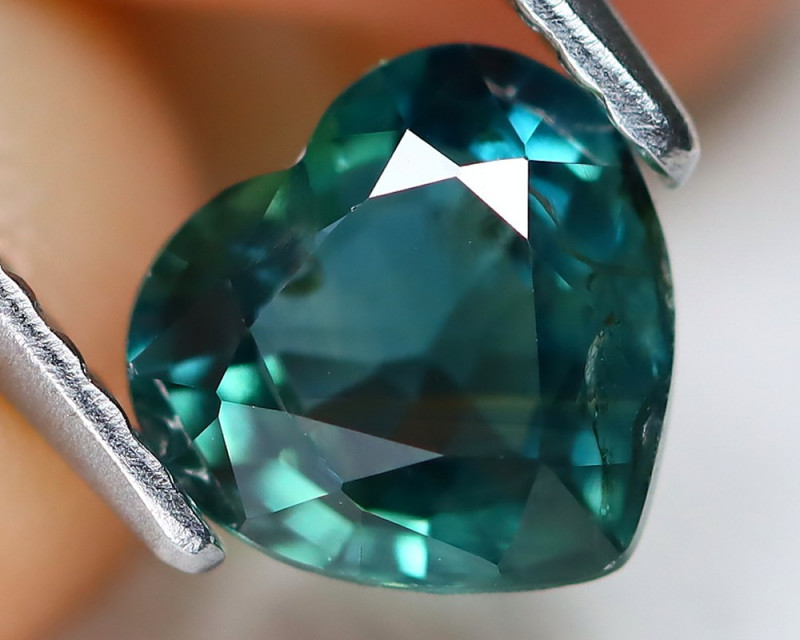
Types of Green Sapphire
Green sapphires have some notable varieties:
Color-Changing Green Sapphire
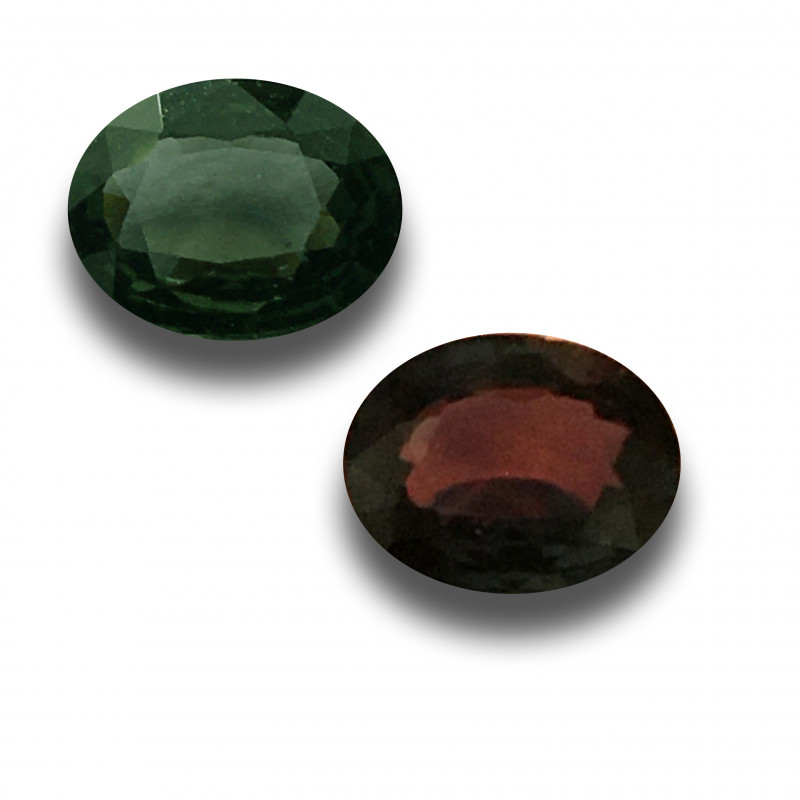
Color-changing gems shift to different hues under different types of lighting, generally daylight and incandescent light.
All color-changing sapphires are rare. Most shift from blue to violet, but even rarer types appear green in daylight and reddish-brown in incandescent light.
The top value factor for these gems is the strength of the color-change (i.e. weak, moderate, or strong).
Bi-Colored Green Sapphire

Sapphires with two visible body colors at once are called bi-colored, bi-color, parti-colored, or polychrome sapphires. This effect is from color zoning.
Bi-colored sapphires are quite rare. The most common color duo is green and yellow. The rarest are blue and purple or tri-colored.
The best ones have distinct color zones separated down the middle and rare blue to purple colors. However, tri-colored sapphires are most valuable.
Kenya produces the most (and highest-valued) green bi-colored sapphires.
Blue and green bi-colored sapphires can be confused with teal sapphires.
Teal Sapphires
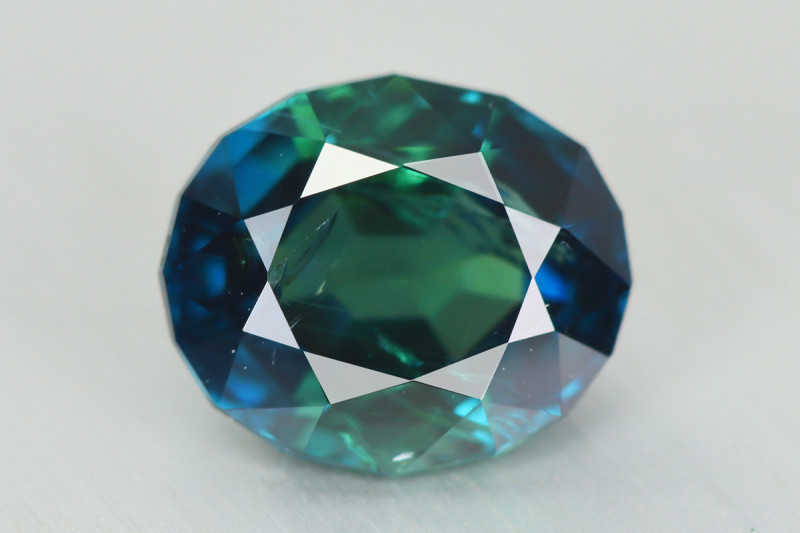
Teal sapphires, or blue-green sapphires, have a mix of dominant blue and green hues, sometimes with yellow undertones. This sapphire color has grown in popularity in recent years.
The main difference between these and bi-colored blue and green sapphires is that teal sapphire hues are blended, not distinctly zoned.
The ratio of blue to green can vary among specimens. One popular subtype that’s often confused with bi-colored sapphires is mermaid sapphires, which have a 50-50 ratio of green and blue. Mermaid sapphires are also called peacock sapphires, and most come from Montana, USA.
Teal sapphires, especially the peacock or mermaid type, can resemble Paraiba tourmalines. However, Paraiba tourmalines are more neon and less saturated than mermaid sapphires, which have a darker intensity.
Notably, teal sapphires are much less expensive than the pricey cornflower blue, Kashmir blue, or Padparadscha sapphires.
You know all the different varieties, so now we’ll break down green sapphire’s symbolism.

Green Sapphire Meaning & History
Green sapphires carry general sapphire symbolism — truth, protection, and friendship — but also symbolize rebirth and new beginnings.
Additionally, green sapphires are believed to represent the divine energy of Mother Nature that flows through all living things — often called “Life Force.”
Teal sapphires symbolize harmony, combining forest and sea energies. They also represent mental clarity and bridging connections with others.
History
Notable green sapphire deposits have been discovered around the world over time.
The first gem-quality sapphires in Montana were discovered in 1865 by gold miners near the Missouri River. While many “Fancy Montana Sapphires” are available, the most abundant color is light blue-green.
Since the 1960s, Australia has become a major sapphire source. Most are blue, but a rare few are bi-colored in yellow and green or yellow and blue. Yellow-and-green ones are sometimes called “wattle” sapphires after the national flower.
The first Songea sapphires were discovered in Tanzania in 1992. These come from the Songea deposit, and they’re known for stunning hues. However, Tanzanian sapphire mining began around the end of WWII.
In 1998, a large sapphire deposit emerged in Madagascar. These Madagascar sapphires are renowned for their large size, high quality, and range of gorgeous colors.
Shifting from mining to the metaphysical, what is green sapphire used for?
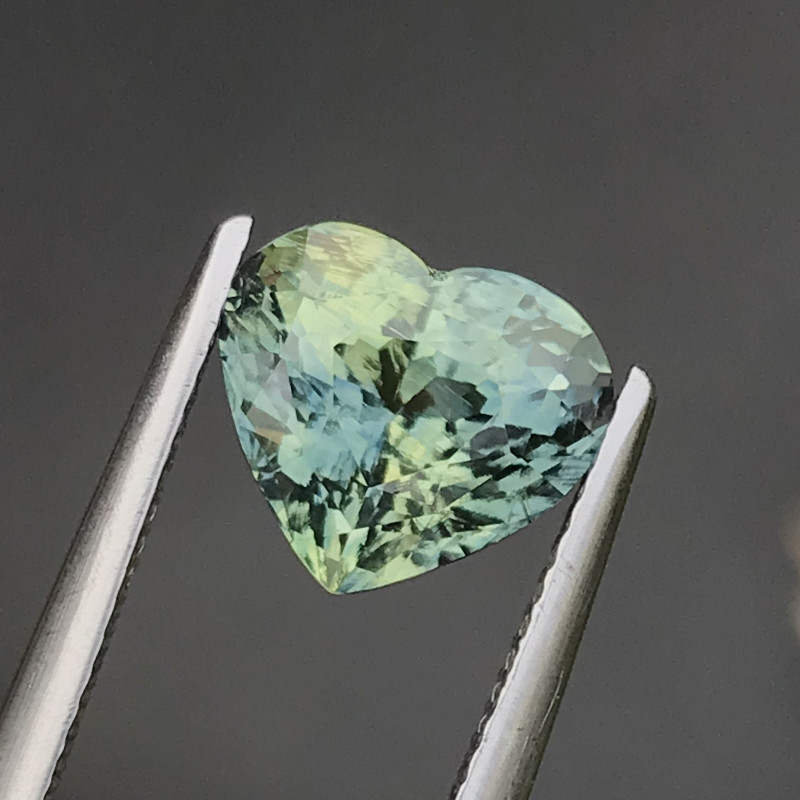
Green Sapphire Healing Properties
Like any gem, green sapphire can be a healing stone. This crystal joins other green gemstones in promoting vitality, fresh starts, and connection to Earth.
Plus, both pink and green gems like green sapphire are great heart chakra stones, opening this energy center to bring you greater love and acceptance.
Physical Healing
Physically, purported green sapphire benefits include treating problems with:
Vision
Dream recall
Insomnia
Skin elasticity
Blood circulation
Emotional Healing
Emotionally, green sapphires are said to allow you to be more vulnerable and understanding. They may help with emotional balance and self-care. Crystal healers also recommend this crystal for encouraging you to stay on track with your goals.

Green Sapphire Gemstone Properties
Green sapphire value depends on the stone’s color, cut, clarity, carat weight, treatments, and origin (natural vs. synthetic).
Color
Color is number-one for green sapphire grading. The most common green sapphire color is olive, but hues range. Common undertones are blue, yellow, or brown.
The best green sapphires have light to medium tones with bright saturation and uniform color distribution. Dark green sapphire is less valuable because it dampens the sparkle and pleochroism.
As discussed before, teal sapphires are also popular, with the 50-50 mermaid or peacock sapphires valued the highest. The rare color-changing or bi-colored sapphires are quite rare and valuable.
Cut
The best cuts for green sapphire are high-quality faceted cuts, with custom shapes or fancy cuts fetching top prices (but also displaying sparkle best). It’s easier to find quality cuts in green sapphires than pink or blue sapphires.
Bi-colored sapphires are slightly trickier, as the lapidarist must choose the cut and orientation to best display the color zoning.
Green star sapphires must be cut as cabochons. Lower-quality material may also become cabochons or carvings.

Clarity
Sapphires have a Type II colored gemstone clarity grade, meaning some small, visible inclusions are expected.
Common inclusions include:
Hexagonal growth lines
Fingerprints
Zircon crystals, often with dark “halo” fractures
Color zoning (typically yellow, blue, or colorless bands)
Good clarity is more important in lighter-colored green sapphires, as inclusions will be easier to spot.
Carat Weight & Size
Most green sapphires weigh 2 carats or less, so price-per-carat rates can increase significantly with higher weights.
Bi-colored and color-changing green sapphires are typically small, with larger stones commanding premium prices.
Treatments & Synthetics
Heat treatments are very common for sapphires, including green sapphires, to improve color and clarity. One study found that heating green sapphires at increasing temperatures made them yellow.
This isn’t always the case, though. Sapphires with lots of rutile inclusions can turn deep blue-green once heated.
Lab-induced irradiation can give synthetic green sapphires a dirty amber color. Irradiation isn’t common.
Synthetic green sapphires are generally more flawless and less expensive.
But how does natural green sapphire form?
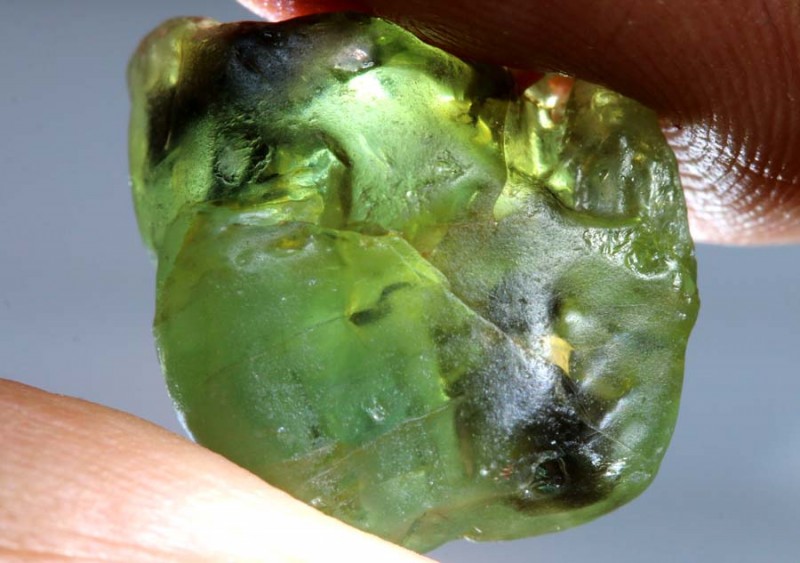
Green Sapphire Formation & Sources
Corundum stones like green sapphire form inside metamorphic or igneous rocks.
In igneous rocks, the stone crystallizes as the rock cools from magma. Longer cooling times creates larger crystals. The igneous rock must be aluminum-rich and silica-poor, like nepheline syenites.
In metamorphic rocks, the crystals often form when ancient sea beds undergo metamorphism from hot, aluminum-rich waters.
Many times, the rocks holding sapphires wear away, allowing water to carry the gems into alluvial deposits like riverbeds.
Mining Locations
Most gem-quality green sapphires come from:
Australia
Ethiopia (teal sapphires)
Madagascar
Montana, USA
Nigeria (teal sapphires)
Sri Lanka
Tanzania
Australia and Thailand are known for producing deeper green sapphires.
The main sources of bi-colored sapphires are Montana, Kenya, and Australia, though Thailand also produces some. Color-changing sapphires primarily come from Tanzania and Madagascar.
Sources aside, what are green sapphires worth?

Green Sapphire Price & Value
Green sapphire prices range based on the stone’s quality and potential special properties (i.e. bi-coloring and color-changing).
The general green sapphire price per carat ranges for good-quality faceted gems are:
Up to 1 carat: $20 to $150 per carat
1 or more carats: $30 to $250 per carat
Color-changing green sapphire prices are:
0.5 to 1 carat: $120 to $3,000 per carat
1 to 7 carats: $300 to $5,000 per carat
Average prices for faceted teal sapphires are:
1 carat: $100 to $300 per carat
2 carats: $300 to $500 per carat
3 carats: $600 to $800 per carat
4 carats: $800 to $1,200 per carat
5 carats: $1,000 to $1,500 per carat
Green star sapphires fetch $100-$300 per carat when 0.5-1 carat and $100-$500 per carat when 1-5 carats.
Green Sapphire Care and Maintenance
Luckily, gemstone care for green sapphire is straightforward. Natural, untreated stones should last a lifetime with proper upkeep. Stones that are heavily included or fractured will be more fragile.
You can wear the stone daily, though you may want protective settings for a green sapphire ring.
Clean green sapphire with a soft toothbrush, mild soap, and lukewarm water. Store separately from other gems. Keep it away from harsh chemicals and remove jewelry before strenuous activities.
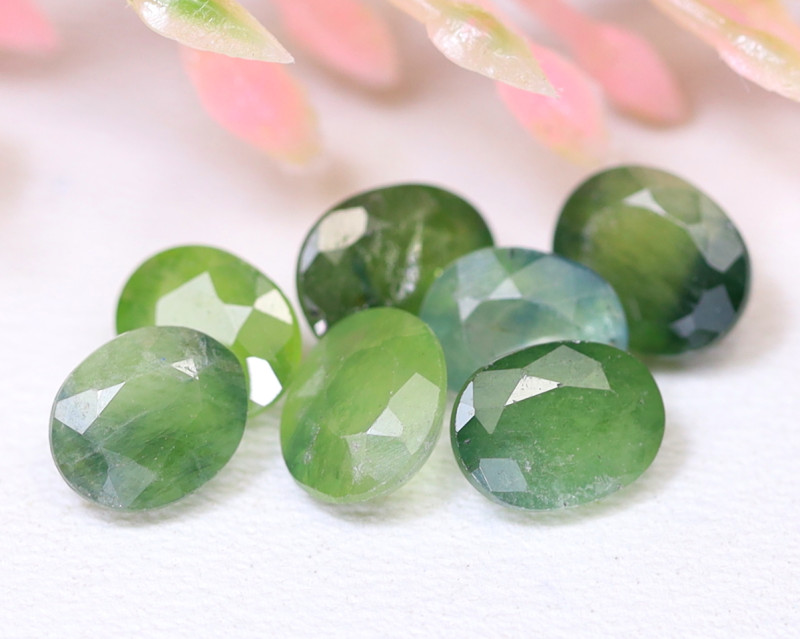
Give the Green Light to Green Sapphire!
Green sapphires aren’t well-known, but that means demand has kept prices relatively low and supplies high. Plus, there’s a shade of green sapphire for every purpose and personality — from fun-and-fresh mints to calm olives to earthy forest hues, you’re sure to find the perfect green sapphire for you!
Buy green sapphire gemstones today!
Was this article helpful?
Ross Sedawie
- Written - 21st Nov 2022
- Edited - 1st Aug 2023















